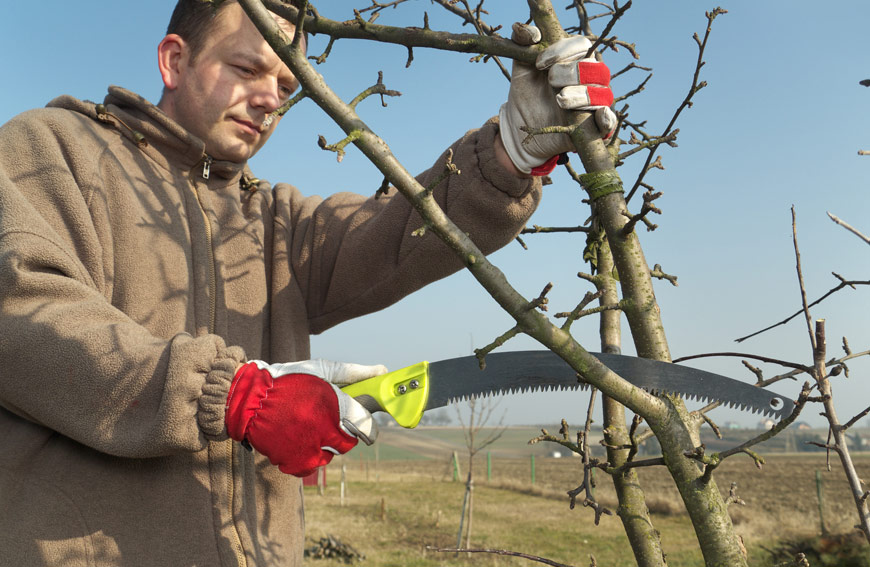Two primary factors are considered when a tree assessment is done by an arborist. #1 is the structural integrity of the tree and #2 is the overall vigor of it. Pruning is the basic foundation of tree care in urban areas and it also affects these two primary factors. You can use pruning to treat, correct, eliminate, and prevent any/all structural defects. Our team here at Five Star Tree Services is going to discuss common tree defects, how they occur, and why pruning will help to manage it.
Structure of Trees
A common question is, why do you need to prune trees, they do just fine in the forest? Where this is true, forest trees are developmentally different from the more aesthetic urban trees which typically stand alone. Due to the density of trees in a forest setting, they grow slender structures since they are closely compact to other trees. They also do this due to the amount of light they can receive when being so close to one another. This close proximity helps to contain any structural defects from happening. Whereas, on the other hand, trees that are placed in yards typically do not have neighboring trees, they are all by themselves. They also can receive a lot of light, from every side. Due to this, structural defects can occur as a growth response to these factors. Luckily, pruning will be able to solve these issues.
Structural Defects
Branch Stubs
Poor pruning or failed branches will result in branch stubs. When this happens, the healing ability of a tree is decreased. Allowing diseases ample time to infect the wound of the tree. This can happen in young and old trees and these stubs should be removed as soon as possible. There are some instances where stubs will be left alone by the arborist. This will happen when significant healing has already occurred. This is because if a new wound is made after healing has already substantially started, it can contradict the whole purpose and slow down the healing process after.
Combination Stems
This is when a tree has multiple stems growing from one original location. They tend to try and grow equally in order to become the primary stem. When this happens, the branch union is typically weak and very susceptible to failing. Pruning when young can help correct this issue from developing. There are certain types of trees that are more susceptible to this and sometimes, if left too long, pruning can’t completely get rid of all of it. The goal for these types of trees is to make sure a combination stem doesn’t form from a primary leader. Heavy tree mass should not come from a combination stem. If you have a mature combination tree, you can’t let it get too big and heavy. You will be required to reduce the canopy regularly in order to ensure optimal safety and resistance to failure.
Cracked or Broken Limbs
Bad storms, strong winds, and gravity are all factors which can result in branches becoming cracked or broken. As soon as you see these branches on your tree, you should have them removed. This will help to negate dangerous instances of a branch falling. As we mentioned previously, cutting off these branches will help the tree heal faster and prevent disease. If you have a tree with a wound that is large in diameter, you will need to monitor it for decay. Notify your local arborist if you notice anything and have them come inspect it regularly.
Dense Ended Branches & Lions-Tailed Trees
While growing, some branches can grow at an aggressive rate and develop in an elongated manner with most of its growth happening at the ends of the branches. Sometimes this can happen from bad pruning. You might have heard these referred to as lions-tailed trees. This is from these particular branches not having ant secondary and scaffolding branches, giving it the appearance of a lion’s tail. This is not good for the branches as they have all the weight collected at the ends instead of evenly distributed over the entire branch. Over time, gravity will have a major factor in pulling these branches down. Making these branches prone to failure. This is why you do not get inexperienced tree pruning done, only consult professional arborists to help with your tree pruning.
Rubbing Branches
Weak spots can be created in a tree if the branches are rubbing together. This makes these branches especially susceptible to failing. You can stop this from happening by simply removing one of the rubbing branches. You should pick the weakest branch to remove.
Dead Branches
It is not unusual for trees to have a few dead branches over the years. Shedding branches is a normal part of a growing tree. But, when left unattended, these dead branches will enviably come crashing down due to gravity. Pruning your tree before this happens is a necessity. This will avoid accidents, potential injuries, and property damage. Pruning dead branches also speeds up the healing process of the tree. This helps to prevent disease and keep the tree healthier. You can easily spot dead branches during the growing season since they will remain barren of new growth while the rest of the tree sprouts its foliage.
How Five Star Tree Service Can Help
Keeping your trees healthy and free of defects is important. Luckily, with our simple Richmond Hill Tree Pruning, most, if not all defects can be eliminated so that your tree can grow and live a healthy, long life. Our team here at Five Star Tree Services would love to help you keep your trees as healthy as possible. The beginning of spring is the perfect time to have your trees pruned. If you would like to utilize any of our services this April, make sure to give us a call at (416) 990-3355 today!


